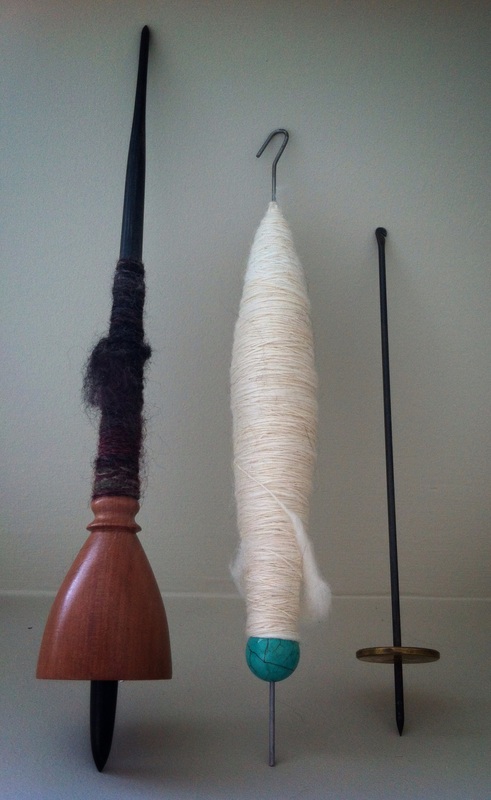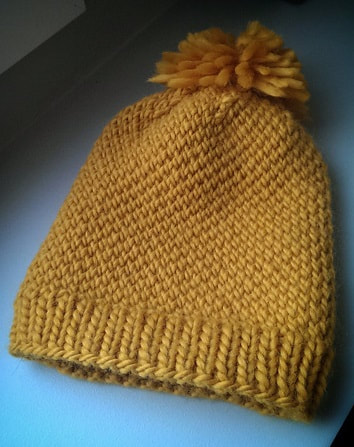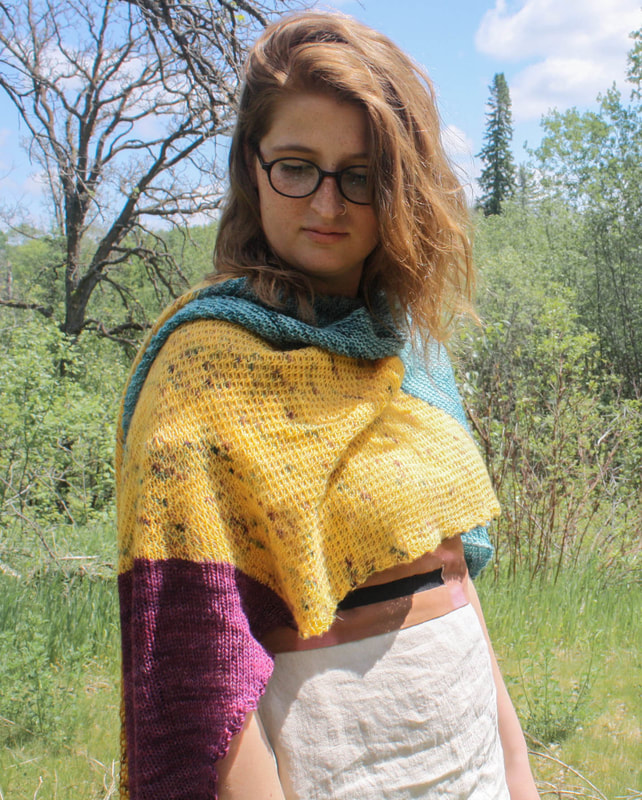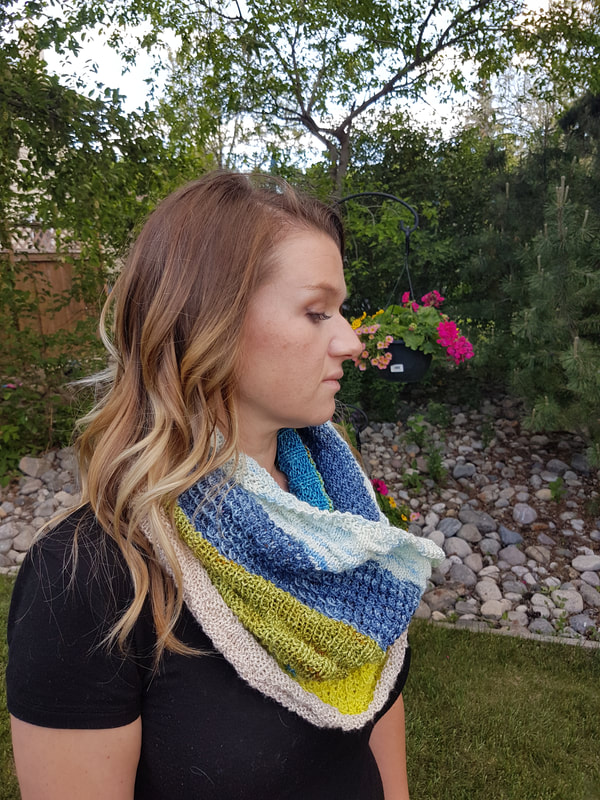|
Spindles are wonderful tools to have. Not only for spinning, but also for collecting! Part 1 in my spindles series, will be a quick overview of supported spindles. I am also going to give more detailed reviews on each of my spindles over the course of the year(s) and plan on doing giveaways with some. So lets get started. The nature of supported spindles is that - you spin them in a bowl, or on a surface where the bottom tip is being supported. You can spin very fine yarns with spindles like these because you are not adding the weight of the spindle to your fibre. This makes spinning fibres with short staple lengths such as cotton, cashmere or angora easier. Long draw spinning is common and many people prefer supported spinning because you don't need to take up a lot of room. You can sit comfortably and don't have to strain your arms. You then use your fingers to flick the top of the spindle and you spin your yarn off the point (tip) of the spindle. The hand you use to flick the spindle is also used to cup it as it spins. It takes a bit of practice but once you get the rhythm down, you can spin to your hearts content.  Tibetan Spindles Tibetan Spindles These are my Tibetan spindles (from left to right: Tabachek, Neal Brand, Texas Jeans, Miss Lucy). The are really great spinners because each of their bases add weight which keep them spinning for a lot longer than you would expect. As you can see by their shapes, each designer adds his/her own special touch. Each of these spindles is rim weighted (which I love). You can pack a lot of fibre on these babies.  Russian Spindles Russian Spindles My Russian style spindles (from left to right: Jim Leslie, Tabachek, Phil Powell, unknown maker). These spindles don't spin nearly as long as the Tibetans above, but they are fast and I can spin very fine yarns on them. They usually have the bulb type shape but in the case of the Phil Powell spindle, they don't always.
 There are several ways to store your spindles. I store mine on one of these boxes from the dollarstore (believe it or not). My friend Susan mentioned these to some of us at one of our Fibre Nights and they are great! How do you store your spindles?
4 Comments
Deborah
1/26/2014 09:31:26 am
Very informative post, Susie! I'd love to have a closer look at your Glindles.
Reply
Freya
12/22/2015 10:03:02 am
Hi there! Love your spindles and wonder if perhaps you could advise me? I love spinning with my Tibetan spindle and have a wooden spindle bowl to match (one that you hold with your knees). The spindle spins fast and I love it, but the point keeps blunting down and I have to keep re- sharpening it (made from purpleheart wood). Is it usual to have to keep sharpening the tip? I always find ceramic bowls slide around for me.. Thanks Freya
Reply
Hi Freya! Tibetans are great spinners aren't they? I am surprised to hear about you having to re-sharpen your spindle though. Purpleheart is a hardwood so it shouldn't be doing that on you I wouldn't think unless is sustained a drop or something. On a good note, some of my support spindles that aren't sharp on the ends work just as well and finding a nice bowl is sure helpful. You might find that a pottery or ceramic bowl with a dimple in it for the tip to rest might do the trick for you and it shouldn't wear down the wood. Sometimes the best spindle bowls aren't really spindle bowls, but candle holders or sea shells for example. Some of these should help keep you spinning happily for years to come :)
Reply
freya
1/5/2016 03:11:06 pm
Thank you for giving such a prompt answer. I find that with my purpleheart spindle the point both wears quickly and the spin deteriorates, which is why I keep trying to sharpen the point. I am wondering if I should have chosen a Tibetan spindle with a shaft made with some other hard wood. Do I understand from your answer that the performance of the spindle should not usually deteriorate that quickly? Leave a Reply. |
Follow Me:PatternsCategories
All
Archives
August 2023
|





























 RSS Feed
RSS Feed
